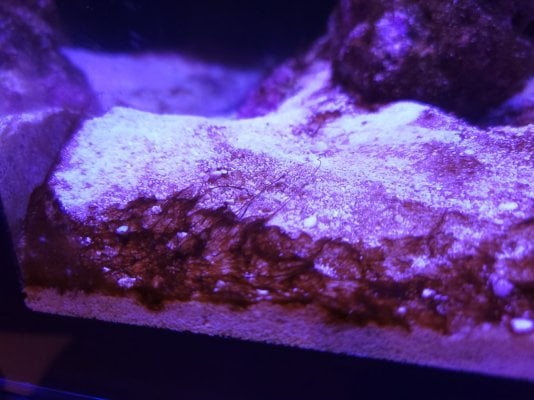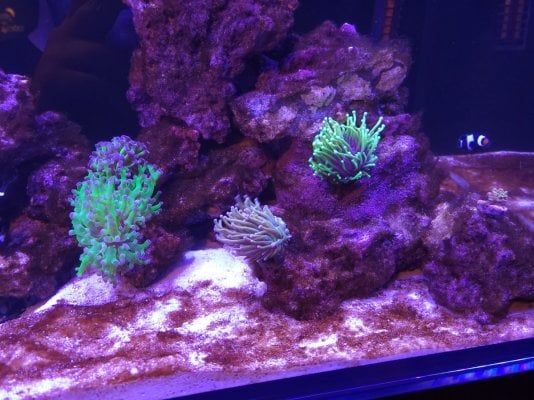Hey guys! I'm making this thread to hopefully confirm that I should keep being patient. Ive had this tank running for about 5 months now. It went through what I thought was a Diotom bloom at about three months, but the algae remained mainly on the sand for about a week then dissapeared. About a month ago I added some more caribsea liferock and about a week later this bloom started. Im assuming the silicates released from the rock have caused this. Id like your guys' opinion on it. Is it diotoms? Should I keep being patient and let it run its course? The algae is starting to get longer and covor more of the rock. Its fairly easy to remove with a toothbrush so ive been trying to brush around the coral to keep it at bay
my tank is a 65 gal with about 15 snails (trochus and astraea) 5 hermits and an amerald crab. I have 7 fish and about 11 frags of coral. I do weekly 10-15% water changes. My filtration includes 2 filter socks and a skimmer.
Nitrates 6.1 (hanna)
Phosphate 0.06 (hanna)
Ph 8.0 (api)

my tank is a 65 gal with about 15 snails (trochus and astraea) 5 hermits and an amerald crab. I have 7 fish and about 11 frags of coral. I do weekly 10-15% water changes. My filtration includes 2 filter socks and a skimmer.
Nitrates 6.1 (hanna)
Phosphate 0.06 (hanna)
Ph 8.0 (api)



















